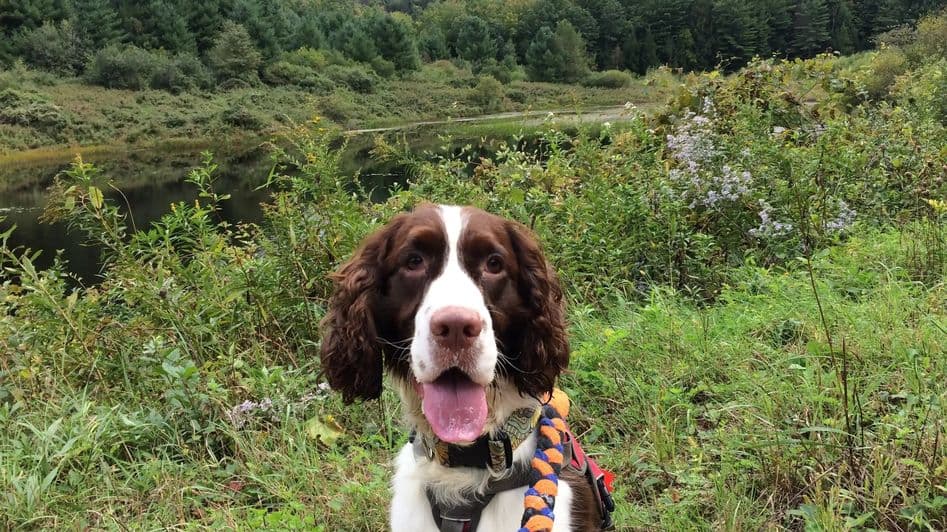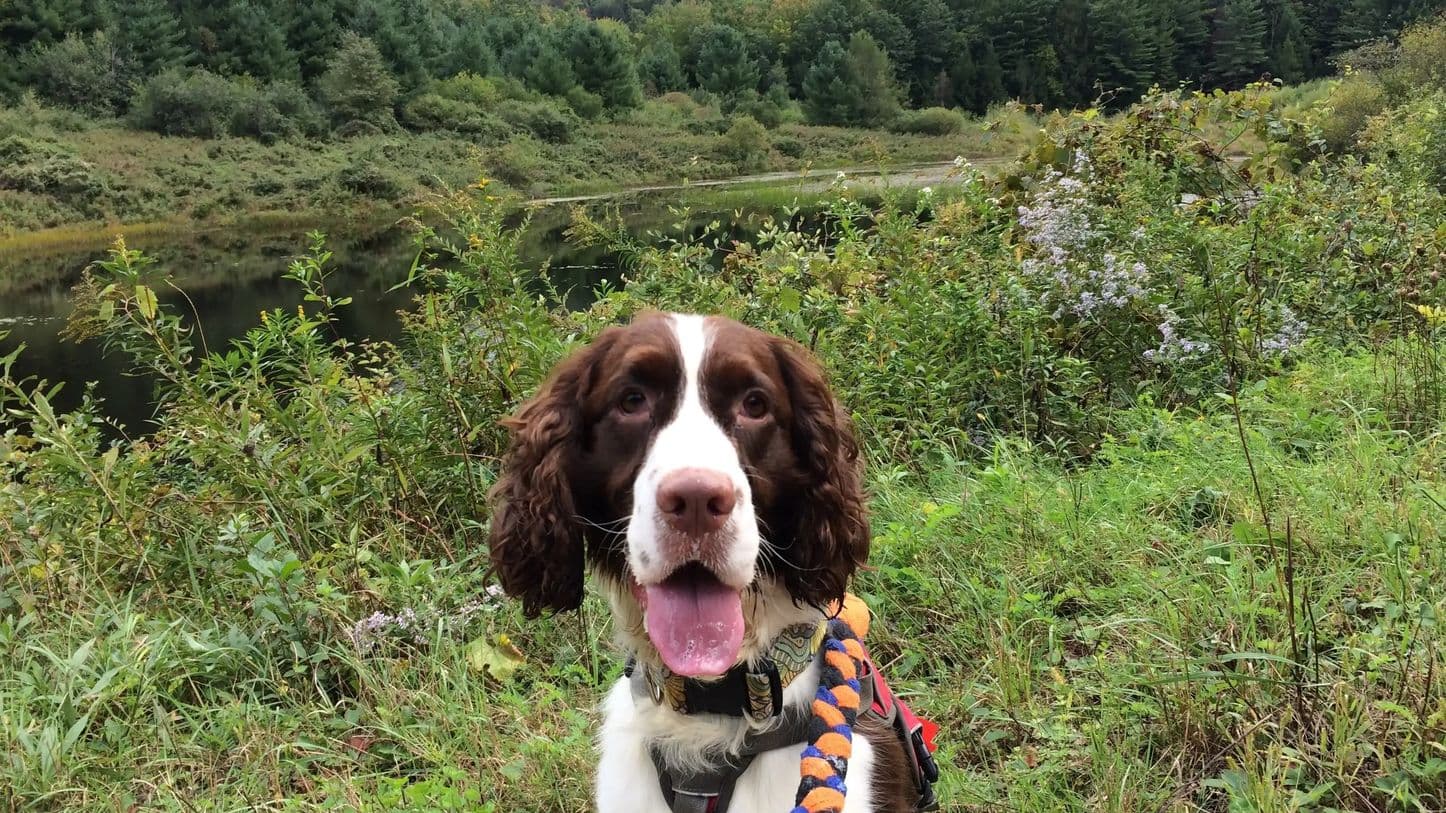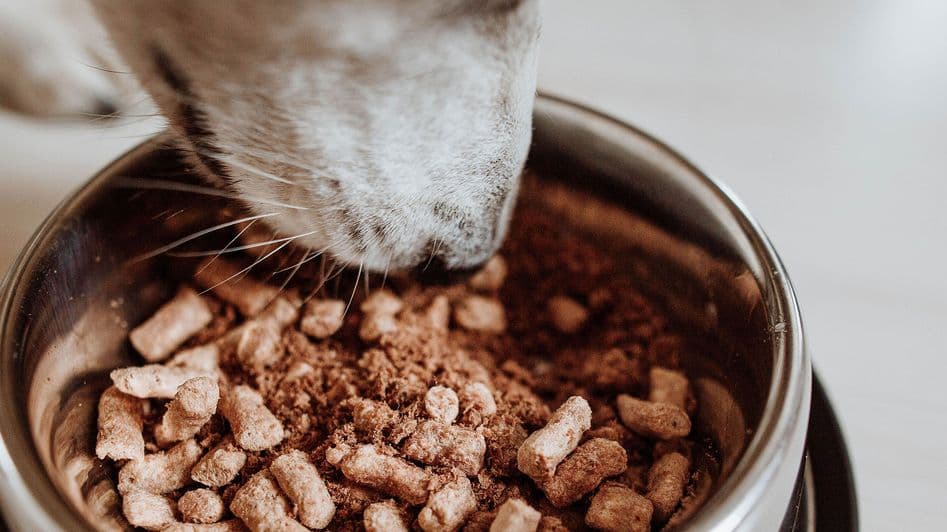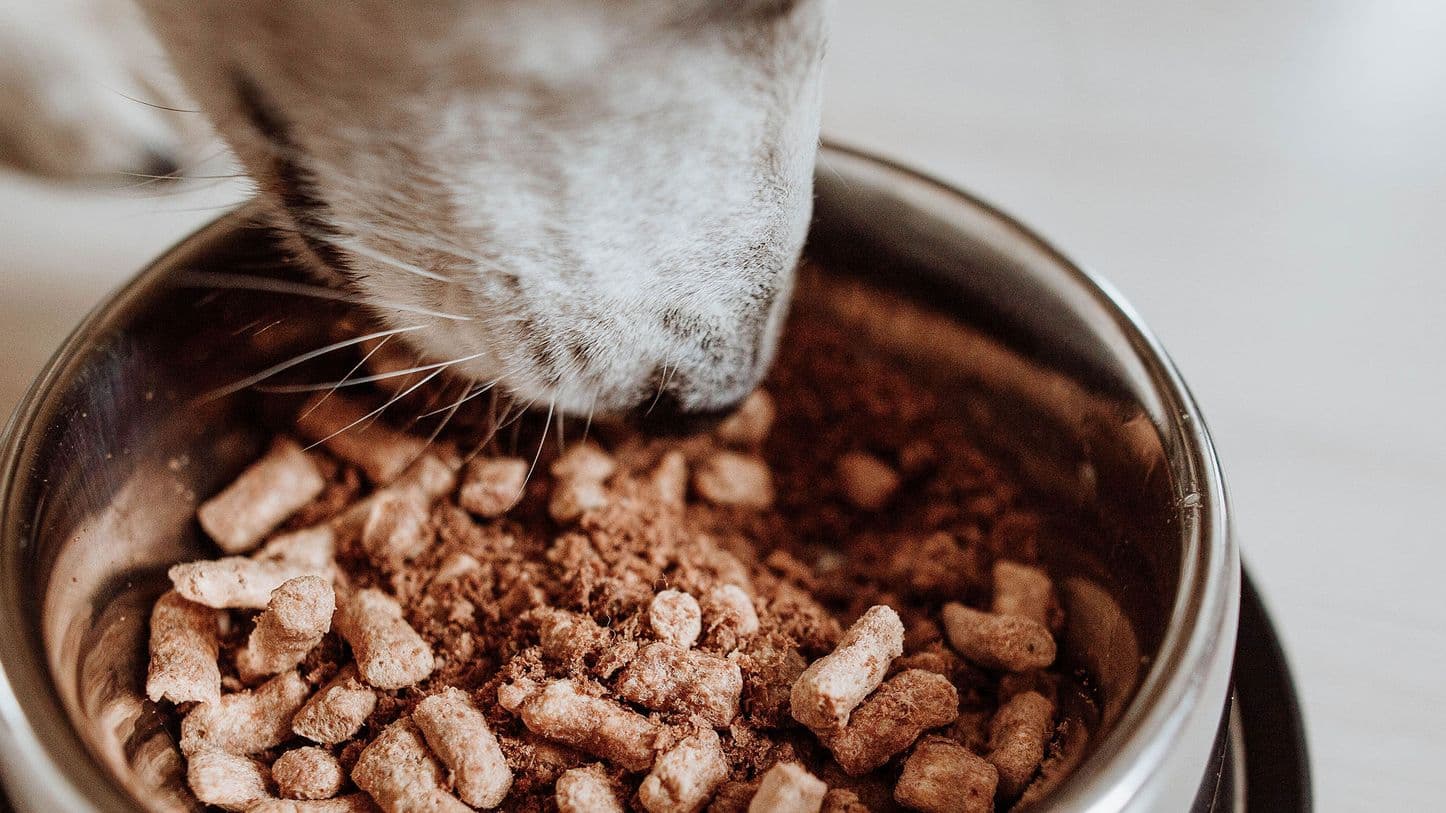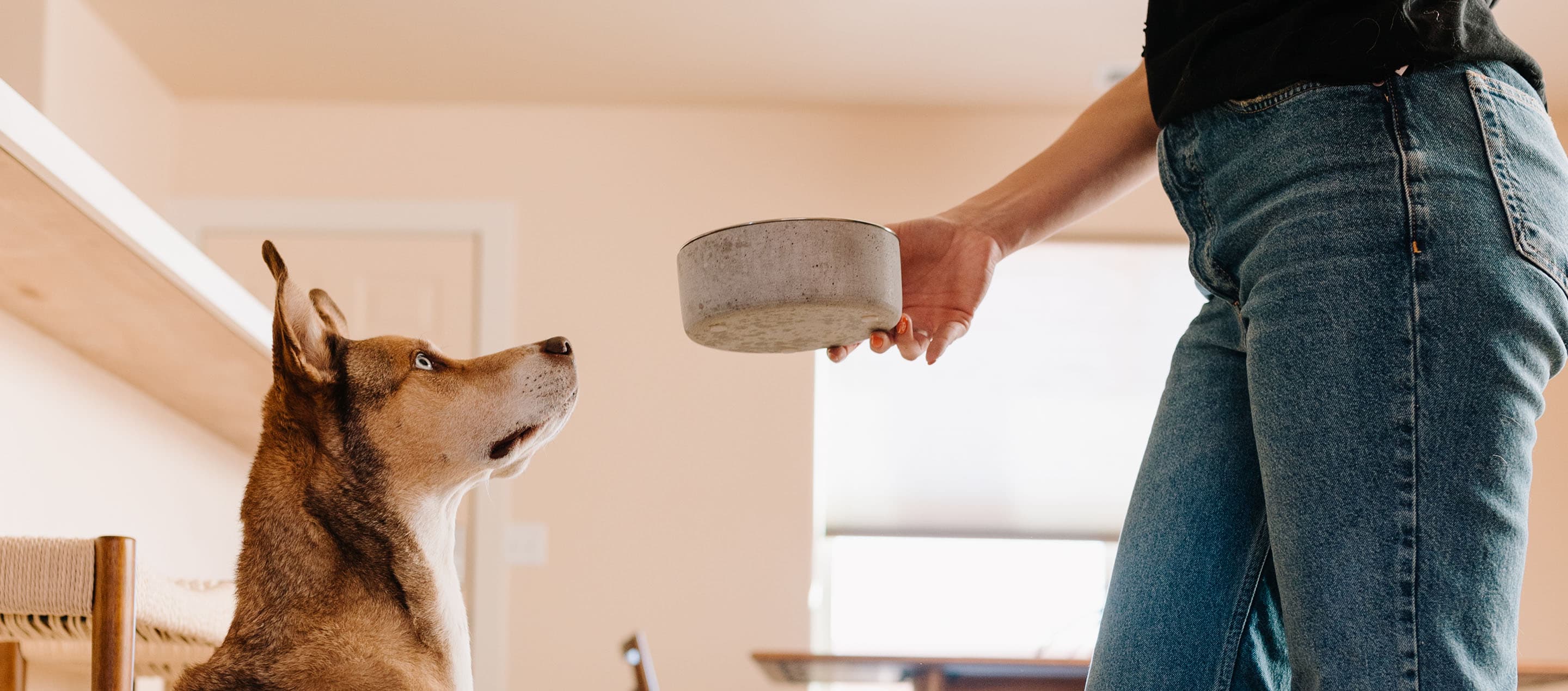
Tips
A Step-by-Step Guide to Helping Rescue Dogs Adjust to Their Forever Homes
9.12.2022
If you’ve made the decision to adopt a rescue dog, congratulations! You’re helping one of the millions of wonderful dogs across the country in need of a good home.
With a little preparation and patience, it won’t be long before your rescue dog truly feels at home. We’ll walk you through:
Preparing to bring your rescued dog home
How to dog-proof your home
How to create a safe space for your dog
Preparing for the first day you take your dog home
How to handle the first introductions
A bonus tip of the ‘rule of three’
Prepare Before Bringing Your Rescue Dog Home
Purchase Pet Supplies
It’s important to stock up on dog supplies before you pick up your new pup. Don’t wait until the big day to stop at a pet store and buy everything you need. You’re going to want your focus to be 100% on your new family member, not a frantic shopping trip.
Critical supplies to already have on hand include:
Yummy Treats: Treats are the key to Fido’s heart! You’ll need treats for training, and also to convey to your new dog that you’re a good person to know.
Collar, Leash and Harness: Even if your new dog is microchipped, you’ll still want them to wear a comfortable collar with ID tags. Also pick up a harness that distributes weight evenly and prevents esophagus damage if your dog pulls on a walk. Make sure it fits well, and is snug but not restrictive.
Poop Bags: You never know when they’ll have to go! No responsible dog owner should be without an easy way to take care of business.
Toys: Offer your new dog a wide variety of dog toys, including chews, tug toys and toys to fetch.
Food and Water Bowls: Choose metal or ceramic bowls, as plastic scratches easily and can breed bacteria in the grooves over time.
Blankets or Bed: These comfortable surfaces will be the foundation of the safe space you’ll make for your dog before they arrive.
Dog Crate: Make sure your pup’s crate is appropriately sized. They should be able to stand up completely and turn around easily.
Brushes: Depending on your dog’s coat, you may need a lot of grooming supplies!
Food: Although you won’t want to switch your dog’s diet overnight, it’s good to have an idea of what kind of diet you want them to be on eventually, and have it on hand.
Dog-Proof The Home
Bringing home your new dog is a bit like bringing home a child.
Thoroughly dog-proof your home before Fido arrives. Even if you haven’t had any indication so far that he’s a chewer or troublemaker, his true personality may come out once he feels secure in your home — and it’s better to be safe than sorry!
Walk around your home with a dog’s eye view: what could possibly be grabbed, chewed, pulled, eaten, sniffed or knocked over? This includes cords and wires, potted plants, rugs, pillows, etc. Plastic bags, ribbons, and dangling clothes seem to be especially irresistible to mischievous pups. Dog-proofing may involve rearranging your home decor, but once your dog is settled in and you are more familiar with their tendencies (and once you’ve been working on the “Leave It” command), you can start reintroducing some items one at a time.
Be especially careful to lock any cabinets that contain cleaning products or chemicals. Most dogs don’t really notice closed cabinets, but particularly determined and investigative pups have been known to open doors, drawers, and shelves. Follow the same process outdoors in your garden or yard. Look for debris, dangerous plants, holes or loose boards in the fence, breakable lawn ornaments…anything that could cause harm or be harmed if Fido investigates it too thoroughly!
Make a Safe Space For Fido
Naturally, you want your dog to view your home as a sanctuary of warmth and love. But that kind of security takes time, so it’s helpful to start out by building a cozy safe space for Fido, a mini-sanctuary within your pup’s new home.
The Alliance of Therapy Dogs emphasizes that this space should be clean, confined and comfortable:
“Your dog needs a space that is theirs alone, where they can retreat if they feel overwhelmed or scared…Consider using a dog crate and filling it with soft bedding and bowls. Place the crate in a private corner of one of the quieter rooms. If your dog finds a corner that they prefer to relax in, then move the crate there, so they have access to their comfortable space.
When your dog is in its safe space, please do not disturb them or allow other members of your family to do so, as this could make your dog feel cornered.” Like any other family member, your new rescue dog deserves and is entitled to privacy when they need it. This may be a luxury they weren’t allowed in previous homes, so giving your dog the time and space to decompress is one of the most loving things you can do for your new best bud.
The First Day
The papers are signed, you have your new rescue dog in the car, and they’re officially yours. The most important thing you can do right now is to go straight home — don’t stop at a pet store!
Believe it or not, this is one of the biggest mistakes people make when picking up a new dog. We get it; you’re happy and excited, and you hope your dog is, too. You think an outing to a pet store to allow your new dog to pick out their welcome-home gift will be a fun experience for everyone.
Unfortunately, it doesn’t quite work like that. Your dog doesn’t know who you are, where they’re going, or why. Taking them to a place where there are even more strange people, strange dogs, and overstimulating sights, scents and sounds is a recipe for disaster. Go straight home instead.
For your new pup’s sake, you may have to control your enthusiasm. Your dog’s entire life has been uprooted — possibly multiple times — and calmness is what they need right now. Once you get home, keep your dog on its leash and let them explore the yard and outside your house first. They may have to pee, or they may be too busy sniffing around. After a few minutes, go ahead and take them indoors and give them a brief tour (still on the leash, at first). Even once they’re off-leash, it’s okay to restrict Fido to one or two rooms if the entire house is too big to wander freely in.
Don’t be offended if he doesn’t want to play, cuddle or take treats immediately. There’s a lot going on for him or her. It’s still good to offer them — your pup will take note that you’re the provider of good things, even if they’re not in the mood for them at the moment. Let your dog explore on his own time, but ensure you show him the safe space, so he knows it’s an option. A chew toy or toy stuffed with treats in your pup’s safe space will give him something to do on his own when he’s ready to relax. Licking, especially, is a self-soothing behavior that will help settle your new friend.
The First Introductions
If there are other animals, children, or family members waiting at home to meet your new pup, don’t let everyone crowd and surround your dog all at once. While humans love a good group hug, dogs are generally not big fans.
Introduce all the humans in the family to your new dog one at a time, preferably outside. Never force interaction or make your dog feel like it cannot escape the situation. In fact, it’s best to let your dog make the first move and approach your family members at their own pace. (Hint: Bribes like yummy treats are perfectly acceptable to illustrate that these new people are friends.) Caution is especially important if you have children. Kids are, in many ways, perfectly designed to alarm a dog: they’re loud, unpredictable, grabby, and they want to hug and kiss and tug ears, even the most laid-back dog may feel threatened or scared when mobbed by shrieking kids!
Emphasize to your kids that they must be calm and quiet when greeting the dog. Even if your kids and your new pup seem to get along well, always supervise children with dogs. As for other pets in the family, make these introductions very slowly and carefully. A good rule of thumb is to let your pets see and smell each other before they are able to make physical contact. Watch their body language and separate them if either pet shows discomfort.
As Rescue Dogs 101 advises:
“If you have another dog at home, introduce them outside before bringing him inside. Even if they’ve already met at the shelter or foster home. Take them for a walk together or put the resident dog in the backyard, bring the new dog to the outside of the fence to let them smell each other.
It is important not to let the new dog “invade” your resident dog’s territory. Take this step very slowly. As hard as it may feel, you should wait 24-48 hours before fully introducing the new dog into your pack. Keep them in separate areas of the house for the first day to let everyone decompress.”
If you have cats, giving them a place high up that they can go to escape the dog is a good way to keep the peace.
The “Rule of Three”
What’s the “Rule of Three?” It’s a rough guideline as to what to expect as your dog transitions from a disoriented rescue dog to a happy family member.
As animal behaviorist Patricia McConnell explains:
“For the first three days, dogs are often in a bit of shock, and don’t show you too much about who they are until they’ve been there a few days. After three weeks, many dogs have settled and behave as though they feel like they are home now, but they really don’t fit into your routine until about three months have gone by.”
The First 3 Days
Establish your daily routine immediately, so your dog’s life starts to feel predictable. For dogs, predictable = safe.
These first few days are your dog’s decompression time. They may spend a lot of it sleeping, and they may not be super interested in playing or cuddling. If your dog seems “stand-offish” or like they’re not warming up to you, don’t take it personally.
Unlike you, your new dog doesn’t know this is a forever arrangement. They don’t know who the heck you are, what you want from them, how long they are going to stay here, or how you’re going to treat them. So be patient, and don’t worry — your pup will learn to love you in time.
One common concern with new rescue dogs is that they may have little appetite. It’s easy to misinterpret this as your dog being “too picky,” but it’s more likely they are just too uncertain and tense to relax and eat.
Even though Fido should be staying on mostly the same diet as they were in the shelter for the first week, a little bit of real meat topper has an intriguing scent and may coax your dog to eat. Make sure they consume at least some of their food every day. Call the shelter or rescue if your dog really won’t eat and you’re concerned — they may have a secret tip!
Finally, it’s important in these first few days not to introduce your dog to people outside the immediate family. Remember, no welcome party. That would be overwhelming for your pup. No matter how eager all your friends and family are to come to meet Fido, be your dog’s advocate, and put their wellbeing first.
The First 3 Weeks
The keyword during the first three weeks is regular. Continue your established daily routine, ensuring all activities occur at roughly the same time each day. That includes:
Mealtimes
Walks
Playtime
Training sessions
Potty times
Quiet time/naps
Also, incorporate your normal activities into your days as much as possible. Fido should now be starting to understand what the “new normal” will be moving forward.
Even if your rescue dog is already potty trained, don’t be surprised if there are a few potty accidents during this time. With everything so new, they may not be completely sure how to communicate this need to you.
If you catch your dog in the act, don’t scold them. Simply take them outside immediately and praise them for “finishing” outdoors. If you find the mess after it’s already happened, just clean it up and don’t worry about it; it’s too late for a training moment now. Consider increasing your number of potty breaks per day to avoid this happening again.
The first few weeks are also when your dog’s true personality will start to shine as they feel more safe and more comfortable. The aloof dog you brought home may become more cuddly, or your low-key dog may become more energetic and want to play. This is also when some “naughty” behaviors may start to emerge. If this happens, work on teaching your dog alternative behaviors that you like better. If you don’t want Fido jumping on people, teach him to sit nicely for attention; if you don’t want him chewing on household items, teach him “Leave it” and “Drop it” and give him plenty of acceptable chews.
It’s important to be consistent and positive with your dog’s training to break any bad habits. You should also make sure not to establish new ones! For example, don’t encourage rough play or wrestling. It can very easily escalate into play biting, and an overexcited dog can cause harm accidentally.
The First 3 Months
Be consistent and patient as Fido realizes several things in the first few months: that this home is permanent, that this home is safe, and which behaviors are expected of him in this home. Fido will now be able to anticipate your daily routine.
These first three months are the perfect time to help your dog build good habits by consistently reinforcing the behaviors you want. This includes even small behaviors. Did Fido come up to you for attention? Is he lying next to the sofa instead of on it? Did he sit nicely for his dinner? Did he leave a dropped piece of food on the floor instead of eating it? In every instance where your dog is behaving correctly, let him know. Too many owners quickly scold bad behavior but let good behavior go unnoticed and unacknowledged. Don’t pass up any opportunity to tell your dog, “That was good, I liked that.” (Praise and treats will get the point across!)
Finally, whenever you are training your new pup in these crucial early days, remember that context is everything — and you’re not seeing the whole picture of what your dog has experienced in the past.
As Petfinder points out:
“If he came from another home, objects like leashes, hands, rolled-up newspapers and magazines, feet, chairs, and sticks are just some of the pieces of “training equipment” that may have been used on this dog. Words like “come here” and “lie down” may bring forth a reaction other than the one you expect. Or maybe he led a sheltered life and was never socialized to children or sidewalk activity. This dog may be the product of a never-ending series of scrambled communications and unreal expectations that will require patience on your part.”
Positive reinforcement has been shown to be both the most humane and also the most effective training method. If you’re having trouble with your rescue dog’s behaviors, breaking a bad habit, or otherwise getting them adapted to your family and your life, don’t be afraid to connect with a professional trainer.
The #1 key to bonding with your new rescue dog is patience, patience, patience.
As the Alliance of Therapy Dogs says:
“When you welcome a rescue dog to your home, you need to be prepared to be patient. It might take them several weeks, or even longer, to fully settle into their new home. So, it would help if you tried to take things slow and celebrate small victories. Whether it’s a tail wag or the dog sleeping through the night, every accomplishment makes a difference in the long run.”
From the first tail wag to the first walk and the first game of fetch, this is an exciting and sometimes emotional time. Follow these steps to help your new best bud adjust, and it won’t be long before you and Fido think, “There’s no place like home!”
For more information on Vital Essentials and our full product line, follow us on TikTok and Instagram. And if you have any questions, be sure to check out our FAQ page for answers. Together, we can ensure your pet gets the proper nutrition they deserve.
Featured in this article:


